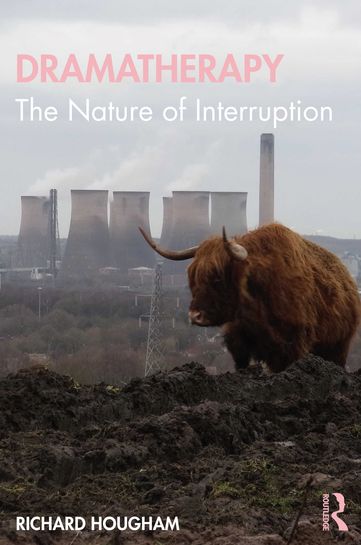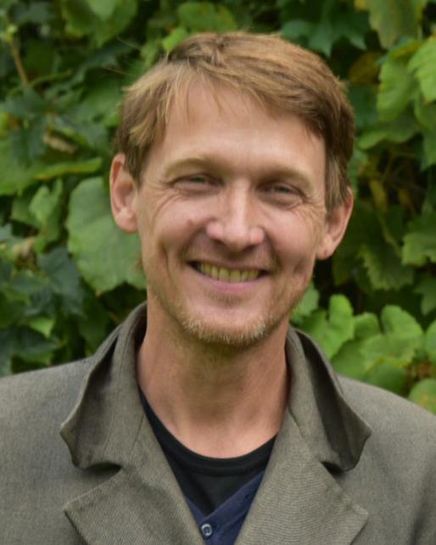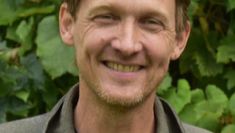Central Hosts the Book Launch for "Dramatherapy: The Nature of Interruption"
On 29 June, Central hosted the book launch for Dramatherapy: The Nature of Interruption, and welcomed an audience of students, staff, alumni, Dramatherapists and invited guests to its Embassy Theatre.
The book, edited by Richard Hougham and Bryn Jones, celebrates 35 years of the dramatherapy programme at Central and 20 years of the MA Drama & Movement Therapy course.
Richard Hougham is a Dramatherapist and Principal Lecturer and the Course Leader of MA Drama & Movement Therapy, as well as the Chair of the European Consortium of Arts Therapies Education (ECArTE). Bryn Jones is a Dramatherapist and Supervisor, as well as a teacher on the MA Drama & Movement Therapy course. His clinical practice includes working with adults on an addiction therapy programme and for a bereavement service.
Dramatherapy: The Nature of Interruption investigates the nature and phenomena of interruption in ways that have relevance for contemporary dramatherapy practice. It is a timely contribution amidst an ‘Age of Interruption’ and examines how Dramatherapists might respond with agency and discernment in personal, professional and cultural contexts.
To mark the launch, we sat down with Richard Hougham to discuss the book, the course, and his work as a practitioner.
Congratulations on the launch of your book! Can you tell us more about the book and how the idea to explore dramatherapy within the context of interruption came about?
These past few years have seen a series of extraordinary interruptions, dislodging assumptions, securities and exposing the gulf of opportunity and support in our communities. But what has also been apparent is that these interruptions can inform proactive change, so we began thinking about the nature of interruption, and how to consider it in the context of arts therapy training and practice. We also wanted to pursue another book project together, which reflects on artistic, clinical and philosophical questions concerning dramatherapy.
You co-edited the book with Bryn Jones, who also teaches on the MA Drama & Movement Therapy Course. How did you decide to collaborate on this volume?
Well, Bryn and I have worked together on a number of projects and it’s always a pleasure to collaborate and dream up ideas with him.
The launch of the book marks the 35th anniversary of the dramatherapy programme at Central, as well as the School’s 20th anniversary of the MA Drama & Movement Therapy course. Can you tell us a bit more about the history of dramatherapy at Central and about your work with the MA programme?
The drama and movement therapy programme teaches the Sesame approach, and the history of the approach began with the pioneering work of Billy Lindkvist and her research and work using movement with touch and sound with children with Autism. In 1987, Central added the course to its provision, which then included Speech and Language Therapy too. The course was an advanced certificate then, and has since developed through to a postgraduate diploma and was validated as a Masters programme in 2002. The programme is a distinct part of Central’s portfolio, as it is a training in a psychological therapy (Dramatherapy) - so sits as both a vocational training overseen by the Health and Care Professions Council and as a Masters level academic programme. The Sesame approach is always developing and adapting to the contexts and people where dramatherapy is offered as a part of service provision. In particular, we have noticed since the pandemic how many schools, NHS trusts and other institutions are looking for arts therapists to work to support a growing mental health crisis in the UK. I am delighted our new Principal Josette is clearly focussed on Central’s work in supporting mental health and concerned with how drama and the arts have a role to play in supporting people psychologically.
What makes Central’s Dramatherapy course unique, and how does it prepare graduates for professional work after graduation?
We teach the Sesame approach – a means of working artistically and metaphorically with the experience of clients. The theoretical framework is analytical psychology, and the work of Jung remains at the centre of the critical thinking of practice.
During the programme, students undertake placement practice with different client groups, all supported by specialist supervision. The entire programme is structured towards the student being equipped with the necessary skills and reflexivity to begin to work as an allied health professional (dramatherapist) upon qualifying.
A further note about the pedagogy – students work with a Jungian Analyst whilst training and this informs their understanding of the unconscious processes which are an important part of therapeutic practice. Individual analysis, in tandem with the experiential nature of the subjects of Laban, myth, drama and movement and touch and sound create opportunities to reflect on the symbolic nature of unconscious expression. In this way, an emphasis on artistic experimentation and the cultivation of an aesthetic and symbolic attitude are hallmarks of the programme.
Outside of Central, you are also the Chair of the European Consortium of Arts Therapies Education. Can you tell us more about your work with the ECArTE?
ECArTE is an example of the potential and value of collaborative practice and research across Europe. Central remains one of 5 British institutions which are members, sustaining our connection with European colleagues. There are 33 member institutions (European Universities delivering arts therapy programmes) and we are working on several projects at the moment, including the SATTIE project, which is researching assessment of tacit knowledges in arts therapies, and finalising the programme of an international conference in Vilnius, Lithuania in September 2022 see www.ecarte.info
You can find out more about the MA Drama & Movement Therapy Course including graduate successes and information on how to apply.
You can also find out more about Richard Hougham’s work.
Dramatherapy: The Nature of Interruption is published by Routledge.




